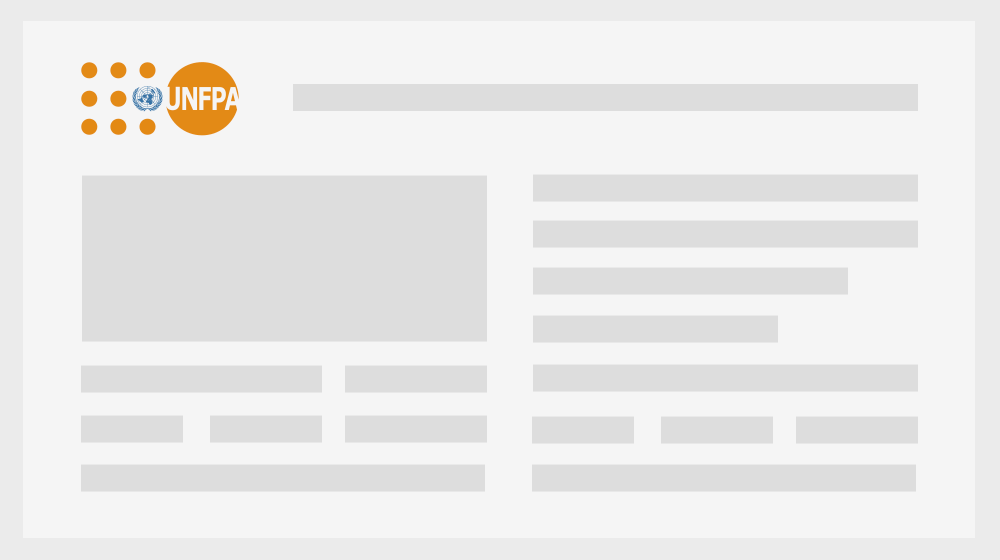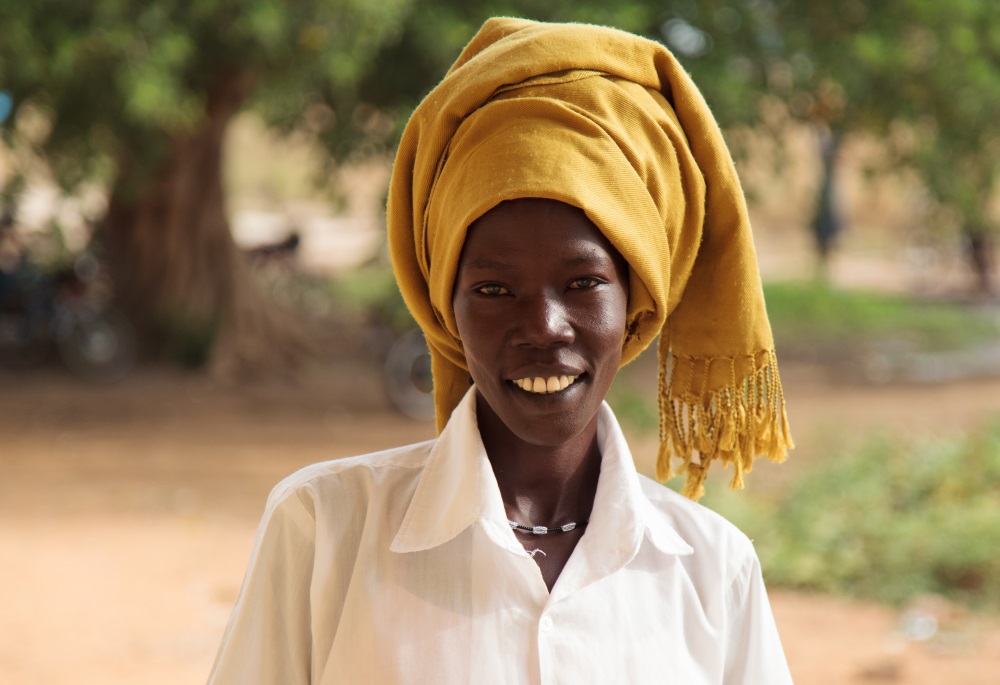Safeguard Young People Programme (SYP)
The Safeguard Young People (SYP) programme supports 11 countries in the East and Southern Africa region, which has a population of almost 270 million, one third of whom are young people aged between 10 and 24 years. The health and well-being of young people, including their sexual and reproductive health and rights (SRHR), play a pivotal role in the development of the region. Improvements in the SRHR of young people contribute to multiple dividends, including the demographic, gender, health, education and climate dividends.
The essence of SYP lies in its belief that young people must be supported comprehensively in their diverse and complex environments to unlock their full potential. The programme prioritizes adolescents and young people aged 10 to 24, with a special focus on the vulnerable age group of 15 to 19-year-olds, especially girls in HIV-prevalent areas and those at risk of pregnancy. To tackle challenges like gender-based violence, teenage pregnancies, HIV and child marriage, SYP identifies and engages change agents involved in implementing youth initiatives.
SYP adopts a cooperative approach, actively involving young people as partners, advisors, implementers and beneficiaries at regional and country levels. The programme collaborates with diverse partners, including ministries of health, education, youth and gender; traditional leaders; civil society and community-based partners. The programme's success lies in its ability to tailor its implementation to the unique contexts of each nation, with local ownership remaining central to its long-term sustainability.
2gether 4 SRHR Programme
The 2gether 4 SRHR Programme is a comprehensive regional programme with applied learning in ten countries, funded by the Regional SRHR Team of Sweden. The programme aims to improve the sexual and reproductive health and rights (SRHR) of all people in East and Southern Africa, particularly adolescent girls, young people and key populations, by promoting an integrated approach to SRHR, HIV and gender-based violence. Read more
Innovation
Innovation means creating and scaling up solutions with the potential to transform the lives of women, youth and adolescents.
In a rapidly changing world, and in particular to counter the challenges of COVID-19, we need innovative solutions to meet the needs of women and girls, and achieve sexual and reproductive health and rights for all.
The Sustainable Development Goals (SDGs) recognize innovation as critical to accelerating progress towards global development aspirations. We must embrace innovation to deliver on our three transformative results to end preventable maternal death, end unmet need for family planning, and end violence gender-based violence and all harmful practices, including female genital mutilation and child marriage.
The importance of social innovation
Social innovation holds enormous potential for the development of communities and improvements in health outcomes. In the context of health, and more especially, sexual and reproductive health, innovation provides an opportunity to accelerate progress towards transforming the lives of women, girls and youth. UNFPA has made significant progress towards achieving its three transformative results.
How do we use innovation in our work?
SRHR and HIV Linkages Project
The integration of HIV services with sexual and reproductive health (SRH) services is an important part of the global response to HIV and SRH. An integrated approach to the management of HIV and SRH makes good ‘people’ sense as it benefits clients and service providers alike, and is likely to improve efficiency in service provision. The Sexual and Reproductive Health and Rights (SRHR) and HIV Linkages in East and Southern Africa project sought to make a difference in health service delivery by linking SRHR and HIV at the policy and system levels. It supported the institutionalization of integrated SRH and HIV service delivery strategies and models in 10 countries in East and Southern Africa.
Phase I of the project was carried out in seven countries – Botswana, Lesotho, Malawi, Namibia, Swaziland, Zambia and Zimbabwe. This phase was supported by the European Union (EU) and the Governments of Sweden and Norway with a total of $15 million for the period 2011-2015.
It aimed to promote efficient and effective linkages between HIV and SRHR policies and services as part of strengthening health systems and to increase access to and use of quality services. It also contributed to the goals of universal access to reproductive health (MDGs 3, 4 and 5) and HIV prevention, treatment, care and support (MDG 6).
Phase II of the project, running from 2016-2019, built on the results of and lessons learned from phase I. Phase II extended to three further countries – Kenya, South Africa and Uganda, taking the number to ten.
Results from phase I showed that the integrated services model promoted in the project led to improvements in service uptake. Examples of this are an increase in the number of people accessing family planning (FP), HIV and other SRHR services; increased uptake of HIV testing and counselling (HTC) and anti-retroviral treatment (ART) when needed; increased coverage of prevention of mother-to-child transmission (PMTCT), in particular the number of newborns screened for HIV; and, increased number of women and girls screened for cervical cancer.
The purpose of phase II of the project was to institutionalize the provision of a minimum package of integrated, non-discriminatory SRH and HIV services in 10 ESA countries by 2019. In at least 3 countries, this included GBV services as part of the minimum package.
What were we aiming towards? How did we plan to achieve this? The findings Publications and resources For more detailed information, click here.
CARMMA (Campaign on Accelerated Reduction of Maternal Mortality in Africa)
CARMMA, the Campaign on Accelerated Reduction of Maternal Mortality in Africa, is an initiative of the African Union Commission, with UNFPA support. It is aimed at lowering the unacceptably high levels of maternal and child deaths on the continent. The campaign has now been adopted by African countries as a way of redoubling efforts to improve the health and survival of mothers, babies and young children. With launching comes implementation of commitments, policies and activities that include mobilization; the development of National Road Maps; provision of sustainable funding; strengthening of health systems; development of monitoring and evaluation mechanisms; promotion of integrated HIV and AIDS; and strengthening of reproductive and family planning services.
PreMDESA, Preventing Maternal Deaths in East and Southern Africa
Impressive progress in maternal health has been achieved in East and Southern Africa but the region still sees far too many maternal deaths and ill health related to pregnancy and childbirth, and far too many young people who cannot get needed contraception. The region has the world’s second worst rate of maternal mortality at 455 deaths per 100,000 live births. See our key activities - Innovation Accelerator and TuneMe - and our Knowledge Hub.
On average, a woman has 4.4 children, and just over one third of married women aged 15-49 years use modern contraception. This data underlines the need to redouble efforts in East and Southern Africa (ESA) to improve the quality and coverage of sexual and reproductive health (SRH) services. This requires a combination of investment, evidence, policies, programmes and advocacy.
UNFPA’s flagship project, Preventing Maternal Deaths in East and Southern Africa (PreMDESA), used a multifaceted approach. It aimed to provide robust evidence to inform successful design and implementation of sexual and reproductive health programmes, as well as support formative research in areas of innovation, demographics, and data.
PreMDESA’s rich basket of activities covered a continuum of interlinked areas and issues:
- Supplying life-saving contraceptives and training health providers to improve both access to and quality of family planning services;
- Research on key reproductive health issues provided hard evidence to inform policies to revitalize family planning;
- Targeting under-served, marginalized groups expanded their access to, demand for and use of reproductive health services;
- Using social media to reach young people with information drove behaviour change - see TuneMe and Innovation Accelerator;
- Improving data capture and analysis produced evidence for advocacy on how to harness the demographic dividend.
The programme provided family planning services to three million users, including nearly half a million additional users, resulting in 2,126 maternal deaths averted, 765,875 unintended pregnancies averted, and 3,725,543 couple years of protection provided.
Read how PreMDESA reduced maternal deaths
Research reports


